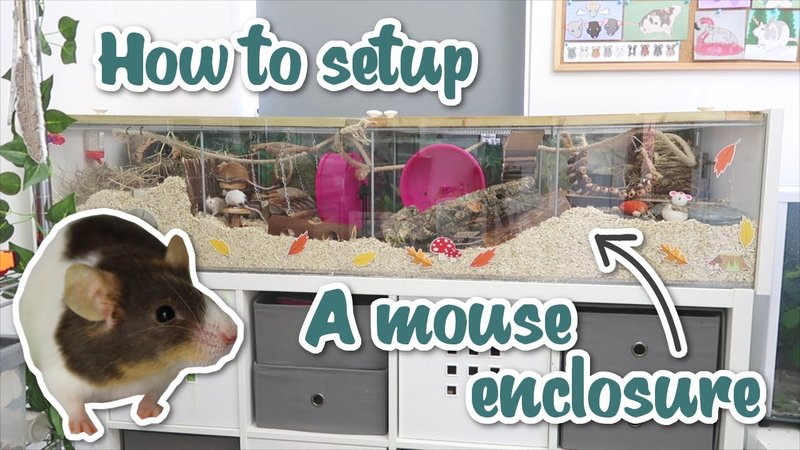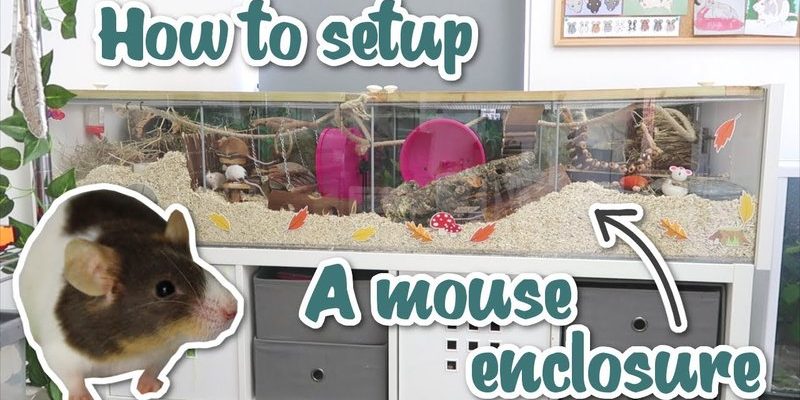
Think of your brindle mouse as a tiny family member. Just like you’d create a cozy home for a new puppy or kitten, setting up the perfect cage for your little buddy is key. You’re not just providing shelter; you’re crafting an environment that promotes health and happiness. We’ll explore everything from cage setup to diet and enrichment—so grab a cup of coffee, and let’s dive into this guide!
Cage Setup for Your Brindle Mouse
Creating a welcoming space for your brindle mouse is the first step in ensuring its happiness. A good cage should mimic its natural environment while providing safety, comfort, and space to play.
Start with a spacious cage, ideally at least 24 inches long, 12 inches deep, and 18 inches high. Wire cages are popular because they allow for good ventilation. Look for a design with horizontal bars, as this will give your mouse plenty of opportunities to climb. Remember, these little guys love to explore!
Next, consider what to put inside the cage. Bedding is crucial. Opt for paper-based or aspen shavings, as these materials are safe and absorb moisture well. Avoid cedar or pine shavings, as they can be harmful to your mouse’s respiratory system. Fill the bottom of the cage with about 1-2 inches of bedding to give your furry friend a comfortable base.
Add Hiding Spots and Climbing Options
Don’t forget that mice are natural burrowers and climbers! Adding hiding spots and climbing features will help them feel secure and stimulated. You can use cardboard boxes, tunnels, or small wooden houses. Make sure these are stable and safe for your mouse. A few branches or ladders can also provide great climbing opportunities.
Finally, put in a water bottle and a food dish. A bottle with a sipping tube will help keep their water clean, while a sturdy dish ensures they can eat comfortably without tipping it over. Check these daily to make sure they’re full.
Diet: What to Feed Your Brindle Mouse
Now that your brindle mouse has a cozy setup, let’s talk about what’s on the menu. Mice have a diverse diet, and it’s essential to provide them with the right nutrients to keep them healthy and active.
A high-quality commercial mouse food should make up about 75% of their diet. Look for pellets that contain seeds, grains, and essential vitamins. Brands like Oxbow and Mazuri are reputable choices. You might be wondering, “Why pellets?” Well, they ensure that your mouse receives balanced nutrition without the risk of picking and choosing their favorite bits.
In addition to pellets, you can introduce fresh fruits and vegetables into their diet. Options like small pieces of apple, carrot, or cucumber can be delicious treats. Just be cautious—only offer these in moderation, as too many can upset their digestion.
Avoid Toxic Foods
While it’s tempting to share snacks, some foods are toxic to mice. Avoid chocolate, caffeine, citrus fruits, and any processed foods. Stick to safe options, and your brindle mouse will thrive. Maintaining a balanced diet will help ensure they have plenty of energy for all that exploring!
Enrichment: Keeping Your Brindle Mouse Happy
Just like people, mice need mental stimulation to stay happy. Think of enrichment as the fun activities that keep their little minds sharp and bodies active. It’s an important part of caring for a brindle mouse!
Start with toys. Chew toys made from safe wood or cardboard can help keep their teeth from growing too long. A wheel is also a fantastic addition—make sure it’s the right size and safe for your mouse. Look for a solid surface without spacing between the rungs.
Don’t forget about social interaction! Spend time playing with your mouse daily. You can let them explore in a safe, supervised environment outside their cage. Just be sure to keep an eye on them—they’re sprightlier than they look!
Create a Rotating Menu of Activities
Consider rotating their toys and activities every few weeks. This keeps things fresh and exciting for your little friend. You might provide a cardboard box one week and a tunnel the next. Variety is the spice of life, after all!
Grooming Your Brindle Mouse
You might be surprised to learn that mice are generally very clean animals, but they do need some help from their humans. Grooming your brindle mouse isn’t a huge chore, but it’s good to keep an eye on things.
Check their fur regularly for any signs of dirt or matting. If you notice any mess, you can gently wipe it clean with a damp cloth. However, bathing a mouse is usually unnecessary and can be stressful for them. Instead, focus on maintaining a clean habitat.
Keep their nails trimmed if they start to get long. Use small animal nail clippers to do this safely. If you’re uncertain about how to do it, observe a veterinarian or an experienced pet owner first.
Health Monitoring
Pay attention to any changes in behavior, eating habits, or fur appearance. If your brindle mouse seems lethargic or stops eating, it’s time to consult a vet. Regular health checks will help you catch any concerns early.
Common Mistakes to Avoid
When caring for a brindle mouse, it can be easy to make mistakes, especially if you’re new to mouse ownership. Here are a few common pitfalls to steer clear of:
– Ignoring Social Needs: Mice are social creatures. Keeping them alone for long periods can lead to loneliness and stress. Consider adopting a pair if you can.
– Overcrowding the Cage: While enrichment is crucial, too many toys can create clutter and stress. Make sure there’s enough room for your mouse to move around comfortably.
– Improper Diet Choices: Avoid feeding them human food outside of their safe treat list. It’s easy to want to share snacks, but stick to a balanced diet to ensure their health.
– Inconsistent Cage Cleaning: Don’t forget to clean their cage regularly! This includes replacing bedding and cleaning up leftover food to keep things hygienic.
Caring for a brindle mouse can be a delightful experience filled with cute antics and heartwarming moments. By creating a well-thought-out cage setup, providing a balanced diet, and ensuring daily enrichment, you will set your little buddy up for a happy and healthy life. Remember, each mouse is unique—so be patient as you discover what your brindle mouse loves most! With a little love and care, you’ll have a joyful companion who will fill your days with fun and fascination.

